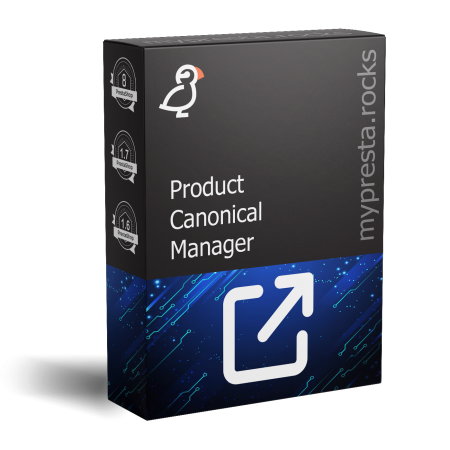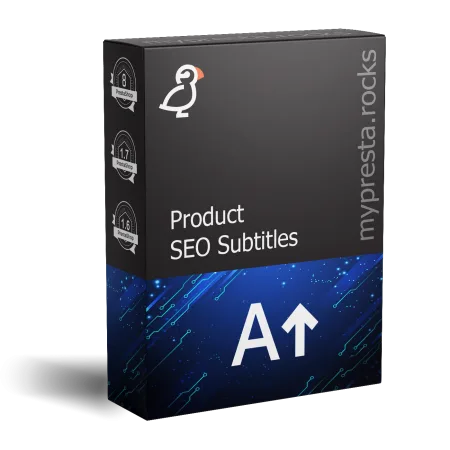In today’s competitive e-commerce landscape, robust SEO is the key to ensuring your PrestaShop store stands out. This...
Blog categories
Blog Search
Blog tags
PrestaShop SEO Basics: Essential Strategies for Optimizing Your Online Store
Search engine optimization is the cornerstone of any successful online store. In the competitive world of e-commerce, every element—from the content on your product pages to the structure of your URLs—plays a vital role in boosting your store’s visibility. In this post, we’ll cover the fundamentals of PrestaShop SEO, exploring strategies and tools that can help you optimize your website for both search engines and users.
1. Content Is King: Detailed Descriptions for Every Page
Compelling content is the foundation of SEO. In PrestaShop, category and product pages should be rich in detail to engage visitors and signal relevance to search engines. Starting with PrestaShop version 8, you have the advantage of a secondary description field. This additional space allows you to craft more detailed, keyword-rich content—ideal for both short descriptions (around 3000 characters) and in-depth long descriptions (up to 10000 characters).
For those using older versions of PrestaShop, our Second Category Description module is the perfect solution. It provides the extra description space needed to fully showcase your products and categories, helping to improve both user experience and search engine rankings.
2. Clean URL Structures: Simplify and Optimize
A clean URL is more than just aesthetically pleasing—it’s a crucial element of SEO. Search engines and users alike prefer URLs that are concise and descriptive. Ideally, your URLs should follow a structure such as domain.com/some-nice-product. In some cases, including the category name before the product name can add an extra layer of organization, which both humans and search engines appreciate.
By default, PrestaShop appends IDs to URLs, which can clutter the link. Our Smart SEO Friendly URL Manager module helps remove these unnecessary elements, ensuring that your URLs remain short, descriptive, and optimized for search engine performance.
3. Meta Descriptions and Meta Tags: Communicate Your Message
While Google may automatically extract content if meta descriptions and tags are missing, manually defining them is a best practice for SEO. Crafting unique meta descriptions for each page signals to search engines what your page is about and can significantly improve click-through rates. Make sure to include relevant keywords and a clear summary of the page content. The right meta tags can set the stage for how your page is indexed and presented in search results.
4. Structured Content: Using SEO Tools for Real-Time Optimization
The way your content is structured can have a significant impact on SEO. Tools like Surfer SEO offer real-time recommendations by analyzing competitors and suggesting improvements for your content structure. These insights can help you organize your content more effectively, ensuring that headings, paragraphs, and keyword placements are optimized to capture both user attention and search engine favor.
5. Optimizing Static Pages Through Back Office
In PrestaShop’s back office, under Shop Parameters → SEO & URLs, you have the opportunity to define meta descriptions and other SEO elements for all static pages of your store. It’s crucial to fill in these details, especially for the homepage (index) and other key landing pages. By taking the time to optimize these areas, you reinforce the overall SEO strength of your website.
6. Enhancing Informative CMS Pages
Beyond product pages, informative content plays a pivotal role in building trust and authority. In the Design → Pages section, you can create CMS pages such as About Us, Delivery Information, and Returns. Decide whether these pages should be visible on Google and make sure to fill in meta tags for each. These pages not only provide essential information to your customers but also contribute to your site’s overall SEO by adding quality content that answers user queries.
7. Technical SEO: The Backbone of a Fast, Responsive Store
Technical SEO is a broad and complex topic that goes beyond basic content and on-page optimization. Ensuring that your store complies with Google’s Core Web Vitals—such as fast loading speeds and mobile responsiveness—is crucial. Key technical elements include:
- Caching Mechanisms and Optimal Coding: Improve site speed and performance.
- Canonical and hreflang Tags: Prevent duplicate content issues and manage language-specific pages.
- Proper Heading Structure: Use H1, H2, and H3 tags correctly to provide a clear content hierarchy.
While these topics deserve their own detailed discussion, implementing best practices in technical SEO is essential for long-term success.
8. Link Building: Building Authority Through External Connections
No SEO strategy is complete without a robust link-building campaign. Register your store with brand-related directories, seek out partnerships for link exchanges, and engage in niche forums to promote your store. Be cautious not to appear overly promotional—authentic, valuable links from reputable sources are key to building authority and trust with search engines. Link building remains an evolving strategy and merits ongoing attention and refinement.
Final Thoughts
Optimizing your PrestaShop store for search engines requires a balanced approach, combining high-quality content, technical finesse, and strategic link building. Whether you’re leveraging new features in PrestaShop 8 or using specialized modules for older versions, a well-structured SEO strategy is crucial for achieving higher rankings and driving organic traffic.
By integrating powerful tools and modules—such as Second Category Description, Smart SEO Friendly URL Manager, and advanced meta management—you can build a strong SEO foundation that not only improves search visibility but also enhances the overall user experience. Stay tuned as we delve deeper into technical SEO and link building in future posts, providing you with actionable insights to continuously refine your strategy.













Leave a comment